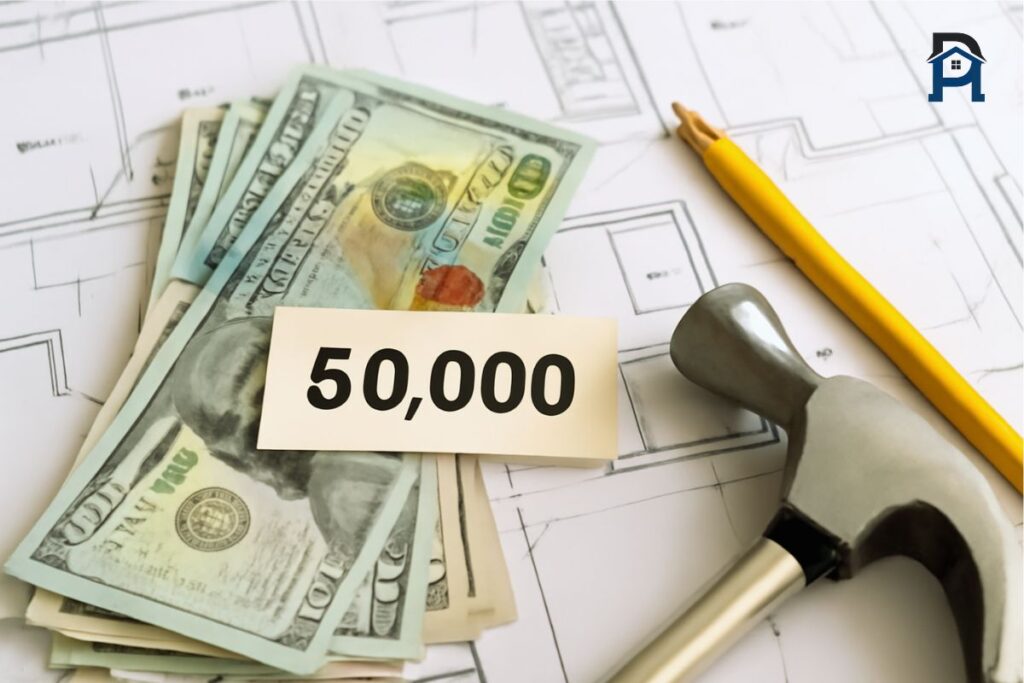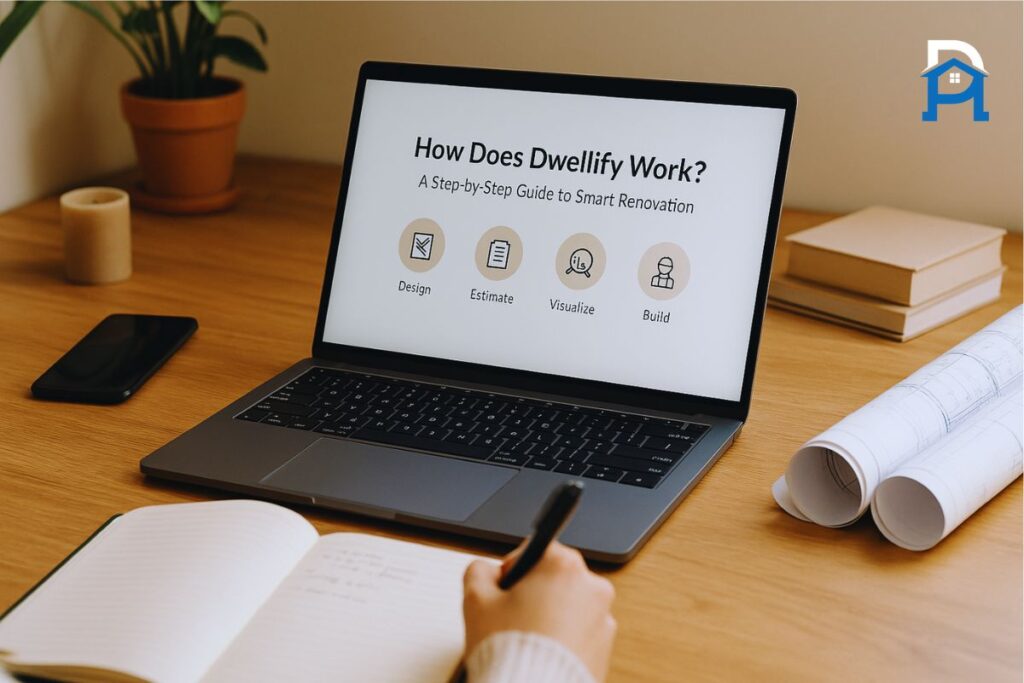I still remember the first time I started renovating my home. Fresh paint, new flooring, that dream kitchen island — I was excited. But then, a storm hit halfway through the project. Water seeped into the unfinished drywall, ruining thousands of dollars’ worth of materials. When I called my homeowner’s insurance, they said, “Sorry, that’s not covered during renovation.”
That’s how I learned — the hard way — about builder’s risk insurance for renovations. If you’re planning a remodel or addition, this topic might sound boring, but trust me, it’s one of the smartest things you can learn before you start.
Let’s talk about it like friends over coffee. I’ll break it down simply, share what I wish I’d known earlier, and help you figure out whether you really need it.
Snippet-Ready Definition:
You may need builder’s risk insurance for renovations if your project involves major structural work or high-value materials. It protects against fire, theft, or damage during remodeling when homeowners insurance may not.
Mission Statement:
At HomeWise Renovation Guide, our mission is to help homeowners make smart, confident decisions about their renovations. We simplify complex topics like insurance and remodeling so you can protect your investment and build your dream home without worry.
What Is Builders Risk Insurance?
Think of builder’s risk insurance (also called course of construction insurance) as a safety net for your home while it’s under renovation. It protects the physical structure and materials from unexpected damage — like fire, theft, vandalism, or bad weather — during your project.
Unlike your regular homeowner’s insurance, which covers your finished home, builder’s risk focuses on what’s under construction. It steps in when your walls are open, the roof’s being replaced, or new rooms are being added.
Here’s the thing: most homeowner policies exclude coverage when you’re making major structural changes. So if something goes wrong mid-renovation — a stolen appliance, a burst pipe, or a small fire — you could be left paying out of pocket.
Why Homeowners Insurance Isn’t Enough
A lot of people assume, “I already have home insurance, I’m covered.” I thought the same — until that storm.
But homeowners policies are designed for occupied, finished homes. Once construction begins, the property becomes a “job site,” and that changes everything.
Here’s why your standard homeowner policy might not protect you:
- It usually excludes damage during renovation or structural change.
- It doesn’t cover materials stored off-site or in transit.
- Claims during construction can void your existing policy.
So, while you think you’re covered, you might actually be standing on thin ice. That’s why builder’s risk insurance exists — to fill that coverage gap and protect your investment while your home transforms.
Do You Really Need Builders Risk Insurance for Renovations?
Short answer: probably yes — if your renovation is more than cosmetic.
If you’re just repainting your living room or replacing a faucet, you can skip it.
But if your project involves new walls, wiring, plumbing, or additions — or if you’re spending tens of thousands of dollars — builder’s risk insurance is worth serious consideration.
Here’s how to think about it:
- Major remodels or additions: new rooms, structural changes, or roof work definitely need coverage.
- High-value materials: if you’re installing custom cabinets, marble countertops, or imported fixtures, they’re expensive to replace.
- Contractor involvement: if there’s a general contractor or multiple trades, risk multiplies.
- Lender requirement: some banks require builder’s risk before releasing renovation loans.
Example: California Renovations
If you live in a high-risk area like California, where fires, earthquakes, or theft during construction are common, builder’s risk isn’t just smart — it’s essential. Many California lenders won’t even fund a renovation without proof of it.
Why Builders Risk Insurance Matters (More Than You Think)
Here’s the thing: a renovation project is full of moving parts — materials in transit, workers on-site, weather delays, temporary power lines, even open walls. One incident can wipe out months of work and budget.
Builder’s risk insurance gives you peace of mind by covering:
- Property damage (fire, wind, theft, vandalism, lightning, explosion)
- Materials and supplies on-site, in storage, or being shipped
- Temporary structures like scaffolding, fencing, and site trailers
- Debris removal and cleanup after a covered loss
The best part? You file claims under this policy, not your homeowner’s insurance. That means your long-term premiums stay safe from increases after renovation-related claims.
What It Doesn’t Cover
Every policy has limits. Builder’s risk insurance doesn’t usually cover:
- Earthquakes or floods (you’ll need separate policies for those)
- Normal wear and tear
- Faulty design or poor workmanship
- Tools, machinery, or personal property
But you can customize coverage. Add endorsements for things like:
- Transit coverage: protects materials while being delivered
- Off-site storage: covers items stored elsewhere temporarily
- Testing coverage: for electrical, HVAC, or plumbing systems
- Pollutant cleanup: if construction materials cause contamination
The key is to work with an experienced insurance broker who understands construction projects — they’ll help you build a policy that fits your exact situation.
How Much Does Builders Risk Insurance Cost?
Here’s some good news: it’s not as expensive as you might think.
On average, builder’s risk insurance costs 1% to 5% of your total renovation budget.
Let’s say your project costs $150,000 — your policy could range between $1,500 and $7,500, depending on:
- Project size and duration
- Location and local weather risks
- Type of work (structural vs cosmetic)
- Coverage amount and limits
- Security measures at the job site
Want to save money?
- Secure your property with cameras or fencing.
- Avoid leaving high-value materials on-site overnight.
- Choose a shorter policy term if your project is quick.
- Bundle with your home or contractor’s insurance for discounts.
Think of it this way: you’re spending thousands on beautiful upgrades — spending a fraction of that to protect the entire investment just makes sense.
Who Should Buy the Policy?
This question confuses a lot of homeowners — should you buy it, or should your contractor?
It depends on the project setup.
If you’re managing your own renovation or financing it through a loan, you (the homeowner) should usually hold the policy. You’ll be the “named insured.”
If a general contractor is overseeing the entire project, they might include builder’s risk insurance as part of their contract. In that case:
- Ask to be added as an additional insured.
- Request proof of coverage before construction begins.
The main goal is simple: everyone involved in the renovation should be covered — homeowner, contractor, subcontractors, and lender (if any).
How to Get Builders Risk Insurance (Step by Step)
Getting a policy isn’t complicated. Here’s how to do it right:
- List your project details — budget, duration, materials, and scope.
- Check your current homeowners insurance — some companies may offer builder’s risk add-ons.
- Contact an experienced insurance broker who handles construction or renovation policies.
- Get multiple quotes — coverage terms can vary widely.
- Start the policy before work begins (and before materials arrive).
- Keep documents handy — permits, contractor agreements, receipts, and photos.
Tip from experience: review everything line by line. A good broker will explain what’s covered, what’s excluded, and how claims work. It’s better to ask now than regret later.
Managing Risks During Renovation
Even with insurance, it’s smart to take precautions.
Keep your site secure, store materials safely, and maintain open communication with your contractor and insurer.
Here’s a small checklist that helped me:
- Take weekly photos of progress (great for documentation).
- Lock valuable materials or tools when workers leave.
- Mark hazardous areas clearly.
- Keep receipts for materials and equipment — they help if you need to file a claim.
If damage happens, report it fast. The sooner you file, the smoother your claim process will be.
Regional & Legal Factors You Should Know
Not all states have the same rules. Some — like California, Texas, and Florida — face higher risks due to wildfires, hurricanes, or floods, so local lenders often require builder’s risk coverage before approving loans.
Even if your state doesn’t make it mandatory, local building codes or contractor agreements might. Always check regional laws before you start your project.
Builders Risk Insurance vs Other Policies
This part confused me at first — aren’t all insurance types the same? Not quite.
Here’s a quick breakdown:
- Homeowners insurance: protects your finished, occupied home.
- Builders risk insurance: covers the structure while it’s being built or remodeled.
- Contractor’s all-risk insurance: covers contractor liability and on-site work.
- Course of construction insurance: just another name for builders risk insurance.
In many cases, you might need a combination — homeowners + builders risk — to ensure continuous coverage from start to finish.
Real-Life Lessons & Expert Insights
Here’s a true story:
My neighbor, Sarah, decided to remodel her old kitchen. A month in, a small electrical fire started overnight. It destroyed her cabinets and appliances worth nearly $20,000. Her insurance company refused the claim because she didn’t have builder’s risk coverage — the kitchen was “under construction.”
Now she tells everyone who’ll listen: “Don’t skip this step.”
Insurance experts often say the same thing: homeowners assume coverage until disaster strikes. A short-term builder’s risk policy could save you from long-term regret.
Common Myths & Misconceptions
“Home insurance covers my renovation.”
Not if you’re changing structure or layout.
“It’s only for big projects.”
Even a small addition or high-end bathroom remodel can expose you to risk.
“It’s too expensive.”
Usually costs less than replacing stolen materials or fixing fire damage.
What Happens If You Don’t Have It
Let’s be honest — skipping builder’s risk insurance is a gamble.
If something goes wrong, you might have to:
- Pay for damage or stolen materials yourself
- Delay your renovation until you recover funds
- Face penalties from lenders or contractors
Worse, you could lose months of progress — and a huge chunk of your savings.
Quick Checklist: Do You Need Builders Risk Insurance?
Answer these honestly:
- Is your renovation structural or major?
- Are contractors or subcontractors involved?
- Are materials stored on-site or in transit?
- Is your project lasting more than a few weeks?
- Does your lender or city require proof of coverage?
If you answered yes to three or more — you need it.
After the Renovation: Transitioning Coverage
Once your project’s complete, the builder’s risk policy usually ends.
That’s when you update your homeowners insurance to reflect the new property value.
Pro tip: ask your insurer to conduct a new home appraisal — it ensures your updated space is properly covered and your coverage limits match your home’s true worth.
Comparison Table: Builders Risk vs Homeowners Insurance
| Feature / Coverage | Builders Risk Insurance | Homeowners Insurance |
| Purpose | Covers home under renovation or construction | Covers completed, occupied homes |
| Duration | Temporary (during project) | Continuous (year-round) |
| Covers Materials On-Site | ✅ Yes | ❌ No |
| Covers Theft or Fire During Renovation | ✅ Yes | ❌ Usually excluded |
| Includes Structural Changes | ✅ Yes | ❌ Often excluded |
| Required by Lenders | Often | Rarely |
| Best For | Remodels, additions, major construction | Everyday protection for occupied homes |
Step-by-Step: How to Get Builders Risk Insurance for Renovations
- Define your project scope — include cost, duration, and structural changes.
- Check existing coverage — see what your homeowners policy excludes.
- Talk to an insurance broker — choose one experienced in renovation projects.
- Compare quotes — review limits, exclusions, and add-on endorsements.
- Start coverage early — before construction materials arrive or work begins.
- Keep documents & photos — helps with claims and inspections.
Conclusion: Is It Worth It?
So, do you need builders risk insurance for renovations?
If you’re doing more than a weekend paint job — yes, you do.
It’s not just about protecting walls and wood. It’s about safeguarding your effort, money, and peace of mind.
Renovations already come with enough surprises — don’t let uninsured damage be one of them. Talk to an insurance broker before you start, get the right policy, and renovate with confidence.
Here’s the best part: when your project’s done and you finally walk through that new kitchen or addition, you’ll know you did it smart — not risky.
FAQs
What can’t a landlord do during renovations in Alaska?
They can’t remove tenants without proper notice or violate lease terms, even during renovations.
Can you renovate a house you’re renting?
Yes, but only with written permission from the landlord or property owner.
Can you remodel a home while living in it?
Absolutely, though it’s messy and stressful — plan ahead for noise, dust, and safety.
How often should a landlord do renovations?
It varies, but most update rental properties every 10–15 years or after tenant turnover.
Does builders risk insurance cover theft or water damage?
Yes, most policies cover both — as long as they’re part of a covered renovation project.
Do I really need builders risk insurance for a small renovation?
If your project changes the structure, wiring, or roof — yes. Small paint jobs or cosmetic fixes usually don’t need it.
Does builders risk insurance cover theft or vandalism?
Yes, most policies cover stolen or damaged materials and equipment during renovation.
How long does builders risk coverage last?
Typically for the duration of your renovation — from start until completion or occupancy.
Can homeowners and contractors share a builders risk policy?
Absolutely. Both can be listed as insureds to ensure everyone is protected under one policy.
Is builders risk required for home loans?
Yes, many lenders require proof of coverage before releasing renovation or construction funds.
Disclaimer
This content is for educational purposes only and not legal or financial advice. Always consult a licensed insurance professional before buying, modifying, or cancelling any builders risk or renovation coverage.

I’m Bilal, the founder of this site dwellifyhome.com and a home remodeling expert. From décor ideas and renovation tips to smart solutions for everyday comfort, our goal is to make your home more beautiful, functional, and inspiring. We’re here to share practical advice and fresh inspiration for every corner of your house.




